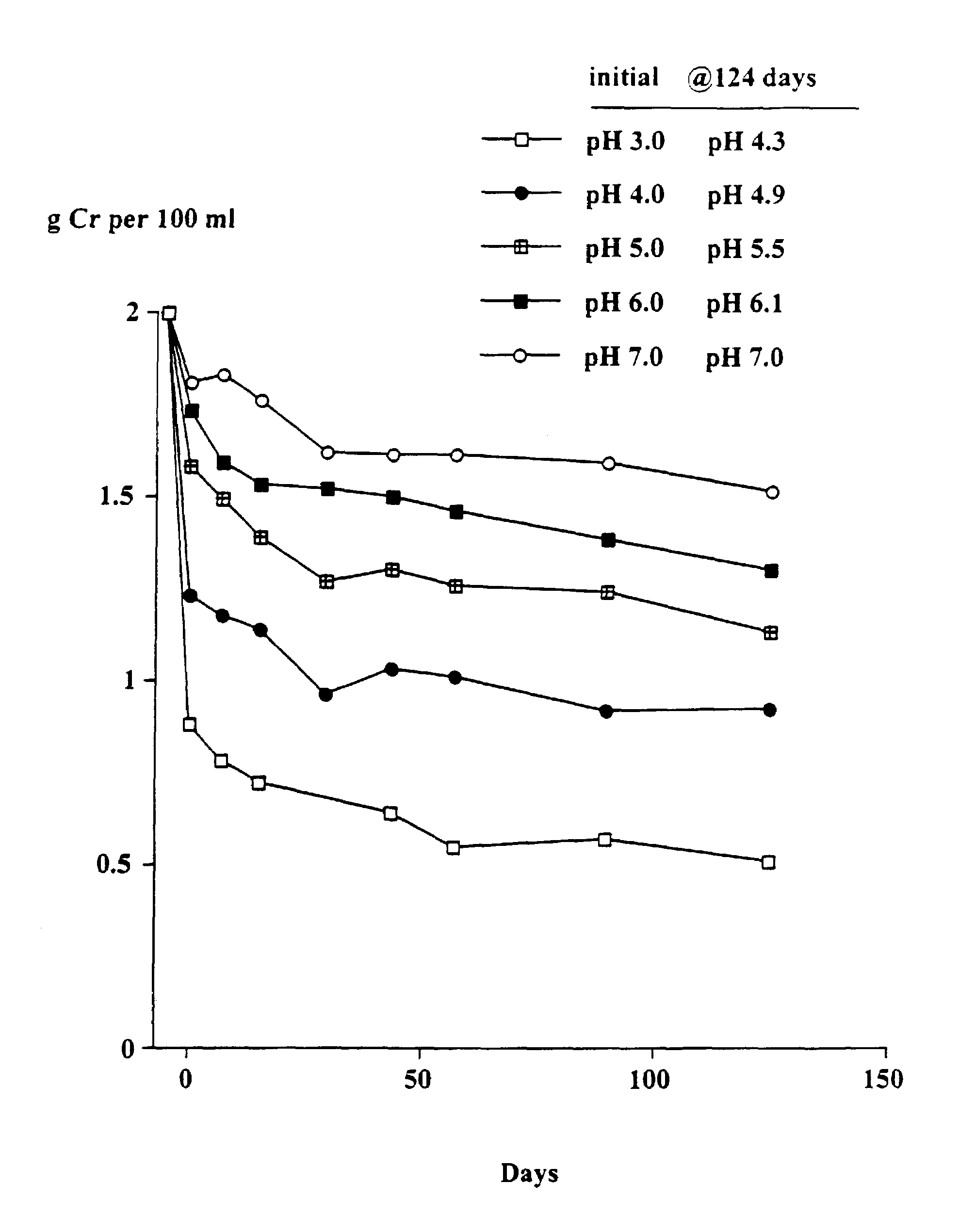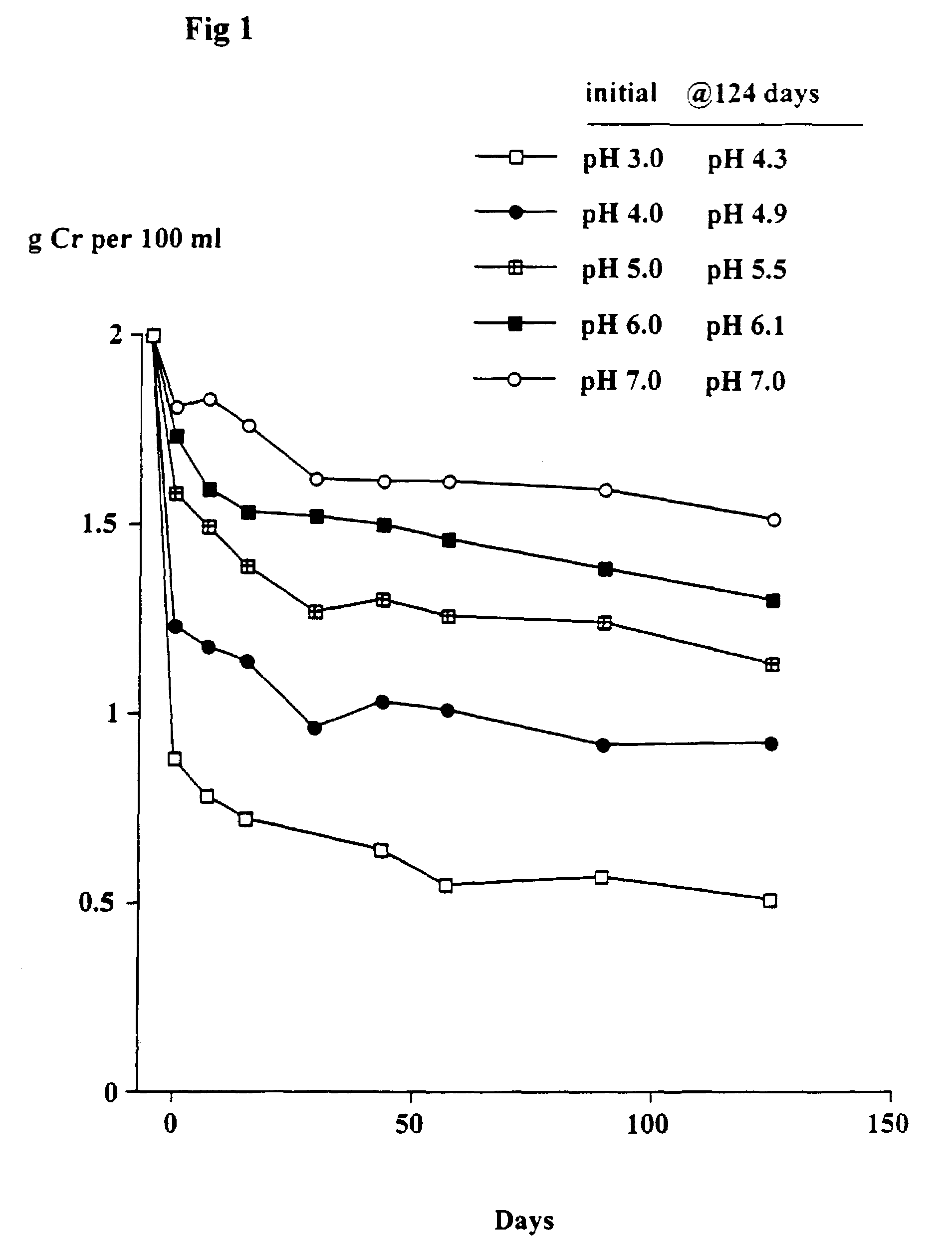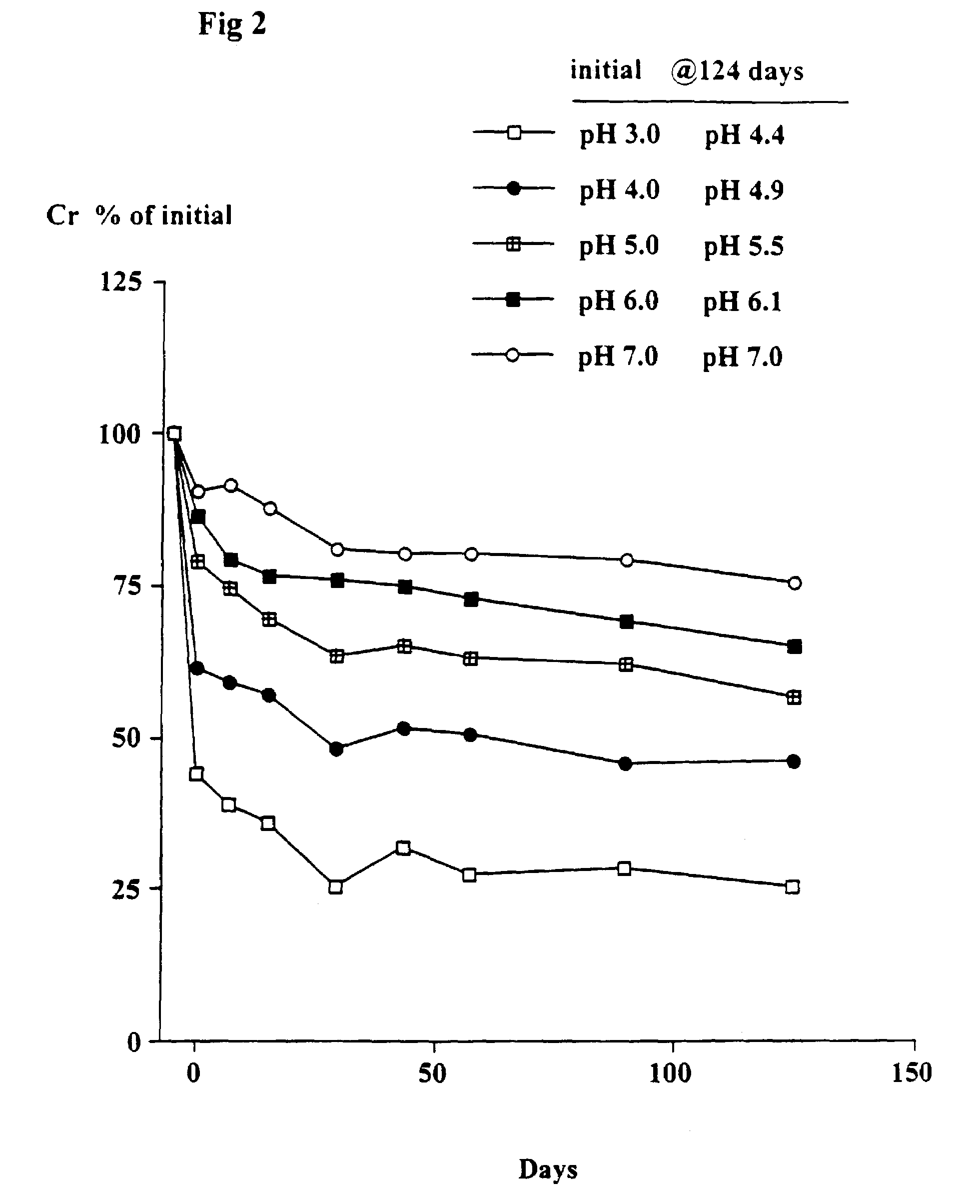Compositions containing creatine and creatinine and a methyl xanthine
a technology of creatinine and methyl xanthine, which is applied in the direction of drug compositions, dispersed delivery, metabolic disorders, etc., can solve the problem that the person skilled in the art of formulating beverages does not offer any useful practical guidan
- Summary
- Abstract
- Description
- Claims
- Application Information
AI Technical Summary
Benefits of technology
Problems solved by technology
Method used
Image
Examples
example 1
[0074]This example relates to a convenient in vitro assay method for determining the concentration of creatine in a solution.
[0075]1. The pH of each solution was determined with a pH meter.
[0076]2. Mixtures were stored in a dark cabinet at ambient temperature (circa 22° C.) in a laboratory.
[0077]3. 2–3 ml of solution were sampled after periods of time between 0 and 124 days and stored frozen at −30° C. until analyzed immediately or within one to two days.
[0078]4. Thawed samples were dissolved in distilled water to give a suitable dilution and the creatine concentration of each was determined by the method of Harris et al, (Scand. J. Clin. Lab. Invest. 33, 1974, 109–120). Briefly, the assay was performed in the presence of (final concentration) 100 mM triethanolamine buffer pH 8.5; 10 mM magnesium acetate; 1 mM EDTA; 30 mM KCl; 1 mM phosphoenolpyruvate; 2 mM adenosinetriphosphate (ATP); 0.18 mM nicotinamide-adenine-dinucleotide / reduced form (NADH); creatine kinase (CK); pyruvate kina...
example 2
[0080]The object of this trial was to determine the stability of creatine when heated at 90° C. at different pH's and the solutions left at room temperature for up to 124 days. At 90° C. the conversion of creatine to creatinine generally occurs very rapidly.
[0081]Solutions in water of 2 g creatine monohydrate in 100 ml 0.1 M citric acid-0.1 M potassium phosphate buffers at pH's 3, 4, 5, 6 and 7 were heated at 90° C. for 30 minutes. The solutions were quickly cooled, the pH (which had changed) re-measured and then left at room temperature as described in Example 1. Aliquots were taken after 7, 15, 29, 43, 57, 89 and 124 days and stored at −30° C. and subsequently analyzed for creatine. The pH of each sample was measured. The concentration of creatinine was estimated from the difference between the starting level (2 g creatine monohydrate) and the measured level of creatine (calculated as the monohydrate).
Results
[0082]As shown in FIGS. 1 and 2, there was a rapid conversion of creatine...
example 3
[0084]The object of this trial was to determine the effect of creatinine in the proportion of 1:1 (w / w) to creatine monohydrate on the stability of creatine at different pHs after heating the mixture for 30 minutes at 90° C.
[0085]Quantities of 1.5 g creatine monohydrate and 1.5 g creatinine were dissolved in 100 ml of 0.2 M citrate-0.2 M potassium phosphate buffers at pH's 3, 4, 5, 6 and 7. The solutions were heated at 90° C. for 30 minutes, cooled, the pH re-measured and left at ambient temperature (22° C.) for up to 95 days.
Results
[0086]As shown in FIGS. 4 and 5, at pH's 6 and 7 there was no loss of creatine during the heating period. Small but progressively greater losses occurred at pH 5, 4 and 3 with time.
[0087]Creatine stability occurred at all pH's. At pH's 5, 6 and 7 there was even a trend for the creatine concentration to increase.
Conclusions
[0088]In the presence of a sufficient quantity of creatine (which for pH's 5, 6 and 7 was equal to or less than a weight ratio creatin...
PUM
| Property | Measurement | Unit |
|---|---|---|
| concentration | aaaaa | aaaaa |
| concentration | aaaaa | aaaaa |
| concentration | aaaaa | aaaaa |
Abstract
Description
Claims
Application Information
 Login to View More
Login to View More - R&D
- Intellectual Property
- Life Sciences
- Materials
- Tech Scout
- Unparalleled Data Quality
- Higher Quality Content
- 60% Fewer Hallucinations
Browse by: Latest US Patents, China's latest patents, Technical Efficacy Thesaurus, Application Domain, Technology Topic, Popular Technical Reports.
© 2025 PatSnap. All rights reserved.Legal|Privacy policy|Modern Slavery Act Transparency Statement|Sitemap|About US| Contact US: help@patsnap.com



